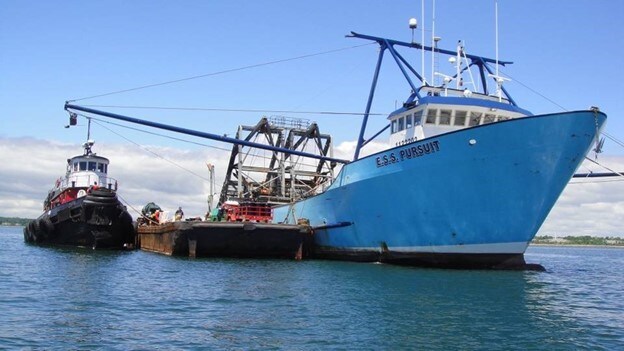At a glance
On June 6, 2010, the ESS Pursuit, a clamming vessel, pulled up a World War I era mustard-filled munition in its catch. One of the crew members saw that the munition was leaking, so he grabbed it and threw it overboard. The fisherman later developed blisters on his hands and thigh from touching the sulfur mustard.

Differences in collecting mustard samples led to confusion
This mustard exposure was the first time in the United States that sampling methods for a chemical warfare agent (CWA) had to be developed for private fishing vessels, clam cages, storage warehouses, and transportation containers.
Intervention
The Centers for Disease Control and Prevention (CDC) and the Environmental Protection Agency (EPA) were both contacted to determine workers’ exposure levels and the boat’s contamination levels. To complete these activities, mustard samples had to be collected. Because the different government agencies had different approaches to sample collection, the reported mustard contamination levels were different. The differences resulted in fishing companies missing fishing days and confusion about when it was safe for the fishermen to go back to work. This incident highlighted the need for one standard method to sample a contaminated vessel, also known as clearance sampling.
Impact
CDC's Chemical Demilitarization Program collaborated with EPA to create an improved method of sampling. This new approach uses a combination of air level readings (air sampling) and wiping the surface area of objects (wipe sampling) to determine mustard exposure levels. This method was very effective, as it cuts down on confusion. Reports now include both kinds of sampling data with clear recommendations, making it easier to understand for fishing companies or others involved in CWA contamination events. Plus, the combined method can be used in other settings besides fishing boats, like buildings or facilities.
Lessons learned
ESS Pursuit’s captain and crew indicated that an incident like the one from 2010 could happen again. They recover munitions during every fishing trip. Because we have a sampling process in place, CDC, EPA, the U.S. Coast Guard, and other partners are prepared to handle future CWA contamination events in any setting.
